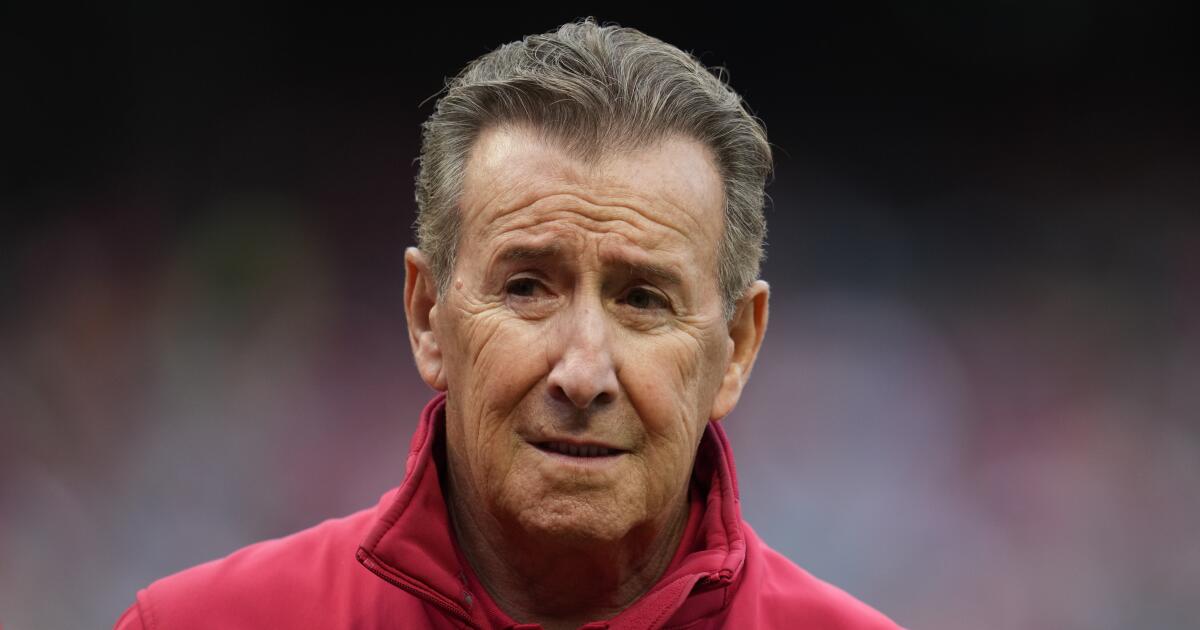One of the most beautiful and powerful segments in this year’s Warren Miller film begins with family footage of a little boy of Dominican descent, born in Brooklyn and raised in New Jersey, learning how to snowboard with his dad.
“Some say that in order to flourish in the mountains, you need to be from the mountains,” a narrator intones with deliberate gravitas. “But what if the true power of the mountains is heeding their call? What if the moment their energy connects to your spirit, you are now of the mountains?”
That thought reinforces the theme of this year’s film — called “75” to mark the 75th anniversary of the Warren Miller brand — which highlights the next generation of skiers and riders and the evolution of snowsports going forward. That little boy, now 16, is LJ Henriquez, a pro rider for Burton in competiitive snowboarding who is described as a “megatalent.”
We see Henriquez honing his craft with his friends at Big Snow, an indoor snow slope located in New Jersey’s Meadowlands that features a slope 1,000 feet long with a vertical drop of 160 feet.
“We all came from similar backgrounds,” Henriquez says while taking a break from ripping the indoor slope. “We’re not supposed to be on these boards, but we’re here. Most of us came from the inner city. That’s representation right there, you know what I’m saying?”
He travels to Japan for backcountry snowboarding with another young snowboarding star from North Carolina, dreadlocked Zeb Powell. They are accompanied by a Gen X mentor, Selema Masekela, whose father was the great South African jazz musician Hugh Masekela.
“It’s a story of mentorship,” executive producer Josh Haskins explained in an interview this week. “It’s a story of what snowboarding could look like going forward if everyone has access to the sport.”
The film, which will be shown at the Boulder Theater Nov. 14-16 and Denver’s Paramount Theater Nov. 21-23, is actually the second installment of Warren Miller Entertainment’s two-year celebration of the man who invented the ski film genre in 1949. Last year’s film, “All Time,” was a retrospective with lots of archival footage telling the Warren Miller story decade by decade. This year’s film links the past with the future.
There is a segment with retired snowboarding superstar Shaun White, a three-time Olympic gold medalist who reflects on his transition from elite competitor into a guy who now rides for the sheer joy of shredding with friends. White is shown riding with the man who coached him, JJ Thomas, and Toby Miller, a 24-year-old competitive rider.
“I really hope the next generation of snowboarders enjoy themselves and have a good time, but I hope they get inspired, how I was,” White says. “Seeing the parks, seeing the tricks, seeing professional riders taking it to the furthest limits, it really shaped who I am today, and I think the next gen deserves that same opportunity.”

There is a segment shot in the Rail Yard at Winter Park, highlighting a group of Black snowboarders who call themselves TDI (Technically Doing It). It was shot in collaboration with independent videographer Luis Medearis.
“That crew of snowboarders is based all over the country,” Haskins said. “They have meet-ups throughout the season. Medearis is the head of that crew. He organizes shoots, capturing them throughout the season. They all meet up at these locations and capture (video) content.”
Other locations for the film include Aspen, Austria, Finland, Alaska, British Columbia, Palisades Tahoe in northern California and Park City, Utah. The film has the usual shots of big mountain powder, aerial tricks, gorgeous skiing and riding in trees and helicopter adventure. One segment takes viewers to Skeena, B.C., for snowcat skiing and riding on land belonging to Indigenous peoples.
But the message is focused on the next generation and promoting inclusivity. Attracting more people of color has become a high-priority initiative in skiing, and the outdoors industry as a whole. That includes Outside Inc., the Boulder-based company that owns Warren Miller Entertainment.
“We feel like exposure in our film is helpful to that cause,” Haskins said. “Our audience will see people who don’t look like them, listen to their stories (and be) more open to the idea that skiing can be accessible to everyone.”
Originally Published:





